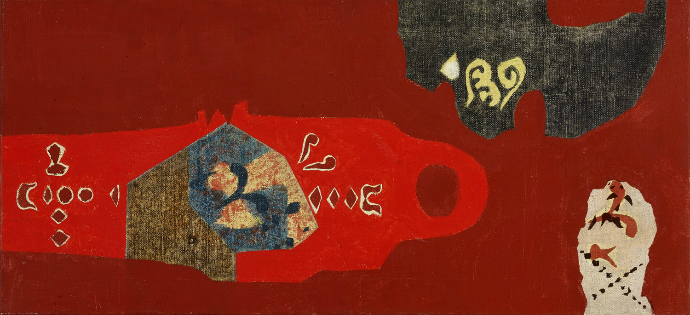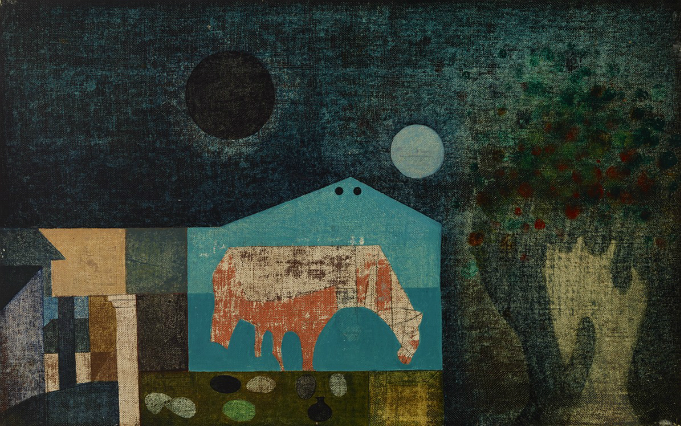The eighth church of Szentendre in Buda
EXHIBITION
With a recently opened exhibition in the Hungarian National Gallery, the oeuvre of Endre Bálint, the greatest Hungarian avant-garde painter, who was born 100 years ago, has made its way where it surely belongs to.
| Götz Eszter |
2014-02-14 14:35 |
While collectors and posterity have always known that this place is in the top flight of European modernism - no wonder, most of the pieces on display are from private collections - the official artistic canon has not been able to get a grip on his works. His last grand exhibition was staged 30 years ago in Műcsarnok (Kunsthalle), a prestigious art hall opposite the Museum of Fine Arts in Budapest.

Consequently, there is a lot to consider and reconsider about Bálint’s oeuvre, and Marianna Kolozsváry, the curator of this exhibition, did the thinking job, and what is more, she did not stop when it was done. She managed to highlight the intertwining threads of biography, artistic influence, and the inner development of a versatile and multi-genre artist with so much empathy that visitors feel like walking in more than one space at the same time. Sometimes it is the space of the fragile and vulnerable inner world of Bálint, an artist constantly tortured by illnesses, and at other times, it is the political labyrinth of the era. An explanation for this might be that the curator’s father was Bálint’s friend and most ardent collector, and this way she has always been influenced by these works throughout her life. However, an extraordinary degree of understanding was also vital to produce an exhibition which positions, through Bálint’s oeuvre, the entire Hungarian avantgarde within the era, the political context and also within European art. It does not only whirl around names, direct influences and parallels, but also gives an insight into the strong motivation which urged Bálint and his contemporaries to create a link between modern art and traditional folk culture, between new and inherited. The exhibition also offers an understanding of how artistic experiences in Paris and local (little) art interconnect in the oeuvres of Endre Bálint, Lajos Vajda, József Jankovits or Lili Ország.

In the highly intensive, dense space of the exhibition, almost all the works (the lithography about labour servicemen, the altar for objects, the late monotypes as well as the discolouring collage works) have such a strong presence that one can almost overlook the Picasso, Braque, Max Ernst or Chagall pictures at certain points. One can witness the euphoria prevailing after World War II; the grand artistic experiment of the “European School”; the unwanted isolation in the 1950s, when the narrow window bars became one of Bálint’s long term motifs. And then there is an entire attic room reconstructed on the basis of contemporary photos: in that original room, Bálint drew more than one thousand black-gold and 45 coloured illustrations to the Jerusalem Bible. His journey from grey to gold and red, and finally, at the end of his life, back to discolouration follows the same rhythm as the cramped and closed exhibition spaces. The works as well as the exhibition design amplify visitor experience dragging the viewer into the world of this unique artist.
A nyolcadik templom. Bálint Endre (1919-1986) művészete
Magyar Nemzeti Galéria
2014. február 1 - május 11.